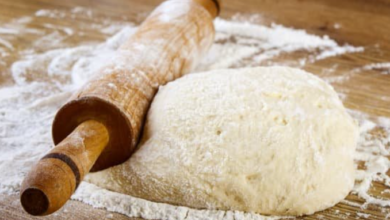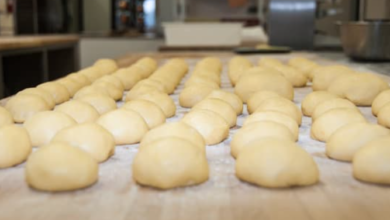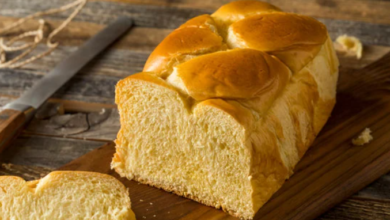What Are the Signs That Brioche Has Gone Bad?

What To Know
- However, if your brioche emits a sour or musty odor, it’s a telltale sign that spoilage has set in.
- While a slight color change is not always a cause for concern, a significant change in color, especially if accompanied by other signs of spoilage, should raise red flags.
- If the brioche has been left out at room temperature for more than 2 hours, it’s not recommended to consume it as it may have spoiled.
Brioche, the delectable French pastry, is a culinary delight known for its soft, buttery texture and rich flavor. However, like any perishable food, brioche can deteriorate over time. Determining whether your brioche is still safe to consume is crucial to avoid any potential health risks. This comprehensive guide will delve into the telltale signs that indicate brioche has gone bad, empowering you to make informed decisions about its edibility.
1. Texture: A Touch of Stale
Fresh brioche boasts a soft and fluffy texture that melts in your mouth. As it ages, the once-delicate crumb becomes dry and crumbly. If your brioche feels hard or stale, it’s a clear indication that it has overstayed its welcome.
2. Aroma: A Sour Scent
The enticing aroma of freshly baked brioche is unmistakable. However, if your brioche emits a sour or musty odor, it’s a telltale sign that spoilage has set in. The presence of mold or bacteria can cause the brioche to develop an unpleasant smell that should be avoided.
3. Mold: A Visible Threat
Mold growth is a common indicator of spoiled brioche. If you notice any visible mold, whether it’s green, black, or white, discard the brioche immediately. Mold can produce harmful toxins that can cause health problems if ingested.
4. Color: A Change in Hue
Fresh brioche typically has a golden-brown color. As it ages, the color may fade or turn a duller shade. While a slight color change is not always a cause for concern, a significant change in color, especially if accompanied by other signs of spoilage, should raise red flags.
5. Flavor: A Sour Taste
The rich, buttery flavor of brioche is what makes it so delectable. If your brioche tastes sour or off, it’s a clear indication that it has gone bad. The sourness is often caused by the growth of bacteria, which can produce acids that alter the flavor of the brioche.
6. Shelf Life: Time Takes Its Toll
The shelf life of brioche depends on various factors, including storage conditions and the presence of preservatives. Generally, plain brioche has a shelf life of 2-3 days at room temperature, while enriched brioche with eggs and butter can last up to 5 days. If your brioche has exceeded its recommended shelf life, it’s best to discard it to avoid any potential health risks.
7. Storage Conditions: A Matter of Preservation
Proper storage is essential to extend the shelf life of brioche and prevent spoilage. Brioche should be stored in an airtight container at room temperature for short-term storage or in the refrigerator for longer-term storage. Avoid storing brioche in direct sunlight or in areas with high humidity, as these conditions can accelerate spoilage.
The Verdict: When in Doubt, Throw It Out
If you’re unsure whether your brioche is still good, it’s always better to err on the side of caution and discard it. Consuming spoiled brioche can lead to foodborne illnesses, which can cause unpleasant symptoms such as nausea, vomiting, and diarrhea.
Common Questions and Answers
1. Can I freeze brioche to extend its shelf life?
Yes, freezing brioche is an effective way to extend its shelf life by several months. Freeze brioche in airtight containers or freezer-safe bags to prevent freezer burn.
2. How can I tell if brioche is moldy?
Mold typically appears as fuzzy or slimy patches on the surface of the brioche. It can be green, black, or white. If you notice any mold, discard the brioche immediately.
3. Is it safe to eat brioche that has been left out overnight?
It depends on the storage conditions. If the brioche has been left out at room temperature for more than 2 hours, it’s not recommended to consume it as it may have spoiled.




